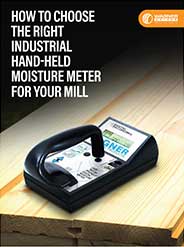Video 16 – Best Locations to Place Relative Humidity Probes
We often get asked a question, “How many tests are necessary and where should the test be placed within a building?”
The ASTM F2170 Standard for relative humidity probes in a concrete gives direction in section 10. It says, “Perform three test for the first 1,000 square feet of floor area and one test for each additional 1,000 square feet.”
So, if you had 10,000 square feet to test, you would place 12 probes spread across that area. It doesn’t mean apply the first three probes within the first 1,000 square feet; it’s just the total number of probes that have to be used for the area that you’re testing.
Now, where do we actually put the probes? How do we choose a location within the building?
The standard does give us some direction and it says, “Select test locations to provide information about moisture distribution across the entire floor, especially areas of potential high moisture. For slabs on-grade and below-grade, include a test location within 1 meter or 3 feet of each exterior wall.”
So, if you had a building that was, let’s say square floor shape you’re going to put one test roughly 3 feet or so from each exterior wall and spread the rest of them around generally throughout the floor. The areas to concentrate on would be areas close to the edges of construction pores, where one concrete pore stop and the next day another pore was placed. A lot of times there may be a questionable situation with moisture coming up through cracks or joints in the floor slabs. So it’s a good idea to test close to joints, outside walls, otherwise, generally just distribute the probes throughout the floor area to be sure you’re covering the entire floor.
Now, during the course of testing there are going to be limitations based on the use of the building. And there may be pipes and dock work and lumber and things in the way, so you’re going to have to make a choice, case by case, at each floor where the best locations are. Often we go out and walk the floor with the superintendent of construction and find the best locations and try to represent the entire floor area. One other thing to watch out for is the area that might still get wet. If windows are not yet sealed in, or doors open and close frequently, stay away from those areas because the test results will be biased incorrectly.



